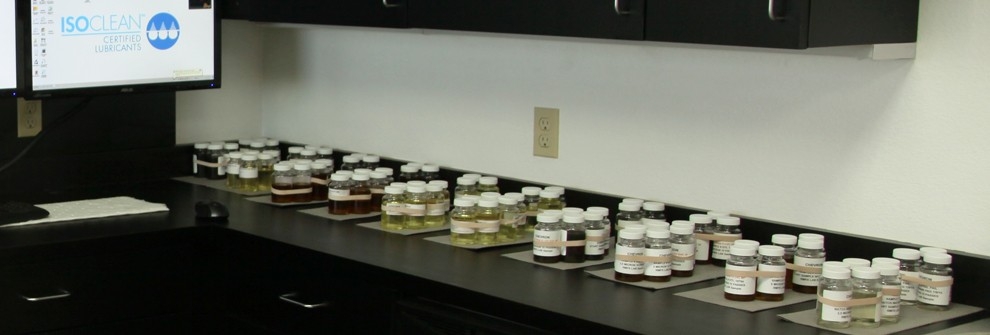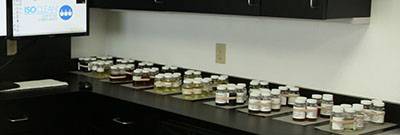Oil analysis: Understanding particle counting technologies


Measuring particle contamination in lubricants is critical to any maintenance reliability program. But here’s the challenge: different labs are likely to use different particle counting technologies, which can produce widely varying results between labs.
It is not unusual to see a variance of up to five ISO Codes on the same sample from two different labs.
Particle counting technologies range in cost from around $2,700 for a basic patch test kit to over $50,000 for a sophisticated, highly accurate laser system. The difference along this spectrum is the ability of different systems to distinguish harmful contaminants from normal elements such as air bubbles, water droplets or additives for an accurate particle count. Even color, which has no impact on lubricant performance, can throw off a particle reading. The viscosity of a lubricant has also been known to skew results. Calibration of a system can impact factor for accuracy. How to obtain the sample is also critical. Proceed to fill the bottle, shake, and dump out two times before refilling for the final sample to be tested. This will improve overall results and is the preferred method used in the field to ensure the sample bottle is not carrying any debris. Sample preparation prior to testing by the lab technician is a very important variable including: Was the sample shaken or stirred? How was it shaken or stirred? Was the sample degassed to remove air bubbles? Was the sample diluted with a solvent? What was the cleanliness level of the solvent?
There are three main categories of particle counting methodologies:
Laser light blocking/scattering: This method involves shooting a laser beam through a stream of lubricant. Contact with a particle will bend the beam, indicating the presence of a particle. The limitation is that air bubbles or water droplets may also cause the beam to bend and therefore count as particles. This equipment requires frequent calibration, which usually needs to be performed offsite. This is a very common method used by many oil analysis labs.
Pore blockage: This entails running oil through screens of different mesh sizes to capture particles. The size of the mesh will determine the particle size. The design can be based on constant pressure or constant flow. In both designs, the particle count distribution is estimated by extrapolation. Moreover, it cannot measure the actual particle size beyond the size of the mesh, nor can it characterize the shapes of particles.
Laser light direct imaging particle counter: This includes a laser light source and a CCD array video camera. It combines the laser beam method with a camera that captures images of particles and runs them through a computer, instantly distinguishing hard particles and removing air and water elements from the particle count. It’s the only system that can automatically identify the shapes and sizes of particles and report five major particle classifications.
So how does this affect your oil analysis program? It’s important to recognize the different methodologies labs may employ for particle counting. Ask your lab what technology is being used to measure your samples. When comparing the same sample results from different labs understand the possible variance in results. Work with your lubricant supplier to understand and monitor your particle counting results for both new and in-service lubricants. To ensure equipment manufacture lubricant cleanliness requirements are met, the Chevron ISOCLEAN® Certified Lubricants program utilizes three different particle counting methodologies.
09/29/2017


























